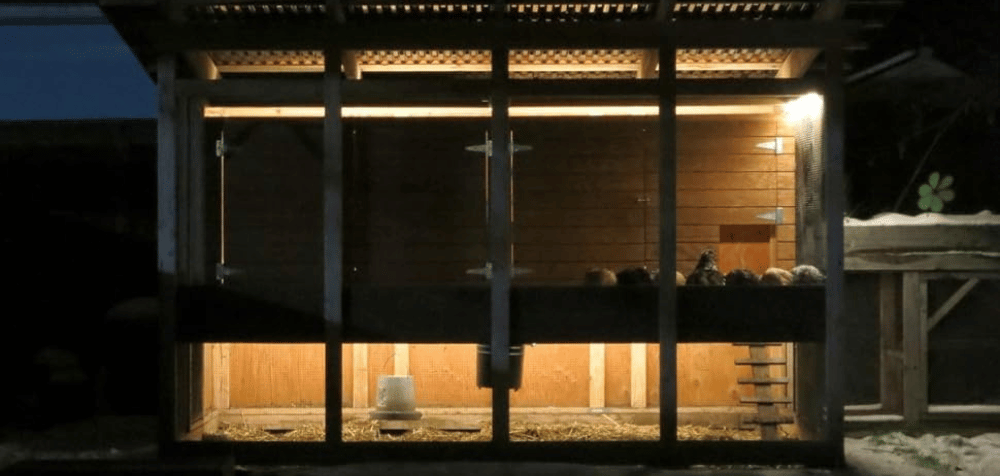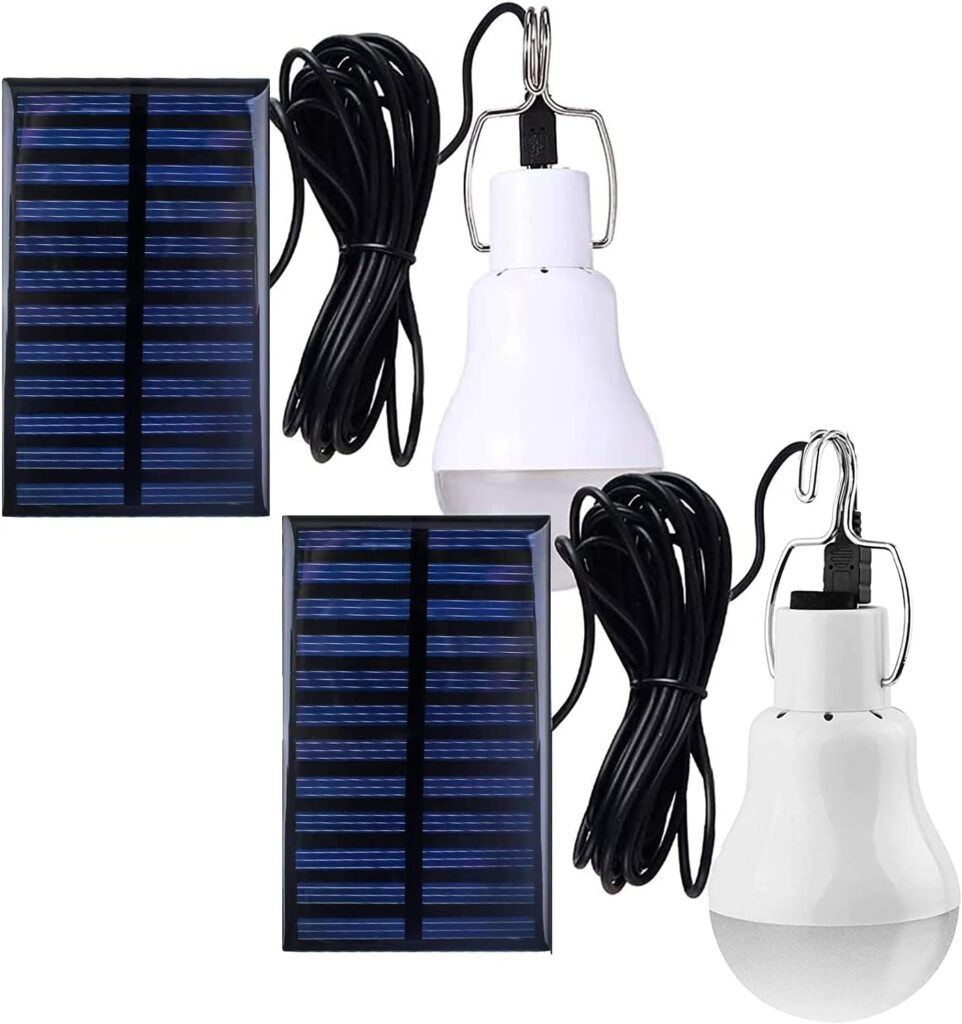In this guide, I’ll break down the best types of chicken coop lighting for the colder months, so you can find the perfect solution to keep your coop well-lit and cozy.
As the winter months approach, ensuring your chickens are safe, warm, and productive becomes a top priority.
One of the best ways to maintain your flock’s health and egg production is by investing in the right type of chicken coop lighting.
Chickens are sensitive to changes in daylight hours, and shorter days can lead to a decrease in egg-laying. But with the proper lighting setup, you can keep your hens happy and keep laying eggs throughout the winter.
Why Do You Need Coop Lighting in Winter?
During the winter, the number of daylight hours decreases significantly. Chickens need about 14-16 hours of light each day to keep laying eggs consistently.
When the days are short, their biological clocks shift, which reduces their egg-laying ability. This is where coop lighting comes in.
By supplementing natural daylight with artificial lighting, you can trick your chickens into thinking the days are longer, thereby encouraging regular egg production.
But egg production isn’t the only reason to light your coop in the winter. Good lighting can also help maintain your chickens’ well-being by keeping them active and reducing stress. Plus, a well-lit coop makes it easier to monitor your chickens’ behavior and spot any potential issues.
Different Types of Chicken Coop Lighting for Winter

There are several types of chicken coop lighting to choose from, each offering unique benefits. Here are some of the most popular options:
1. Incandescent Bulbs
Incandescent bulbs are one of the most common types of lighting found in homes and farms. They produce a warm, yellow light that can help chickens feel cozy and calm. However, they are not the most energy-efficient option, and they generate quite a bit of heat.
- Pros: Warm light, inexpensive to buy
- Cons: High energy consumption, short lifespan
While incandescent bulbs may not be the most economical choice, they can work well in smaller coops where heat generation is beneficial during the colder months.
2. Fluorescent Lights
Fluorescent lights are a more energy-efficient alternative to incandescent bulbs. They are commonly used in barns and agricultural settings and can provide a consistent source of light without excessive heat output.
- Pros: Energy-efficient, long-lasting
- Cons: Can be more expensive upfront, cooler light tone
One thing to keep in mind is that chickens prefer warmer-toned light, which fluorescent bulbs may not always provide. If you opt for fluorescent lights, consider choosing bulbs that emit a warmer hue rather than the typical cool, white light.
3. LED Chicken Coop Lighting

When it comes to energy efficiency and longevity, LED lighting is hard to beat. LED lights use far less electricity than incandescent and fluorescent bulbs, making them an eco-friendly and cost-effective option for winter lighting.
- Pros: Extremely energy-efficient, long lifespan, low heat output
- Cons: Higher initial cost
LED lights come in a variety of color temperatures, so you can choose a warmer or cooler tone depending on your chickens’ preferences. They are also durable, making them a great long-term investment.
4. Solar-Powered Lights
For those looking for a green solution, solar-powered lights are a fantastic option. These lights rely on solar energy stored during the day to power your chicken coop at night. They are perfect for off-grid setups or areas where electricity may be scarce or costly.
- Pros: Renewable energy, no ongoing electricity costs
- Cons: Dependent on sunlight, may not be as reliable in overcast weather
Solar-powered lights are ideal for regions that get plenty of sunlight even during the winter months. However, they may not be as reliable in areas with frequent cloud cover or short daylight hours.
5. Timer-Controlled Lighting
One of the smartest investments you can make for your chicken coop lighting setup is a timer-controlled system. Regardless of the type of bulb you use, timers allow you to automate the lighting schedule, ensuring your chickens get the necessary light exposure without you having to manually turn lights on and off every day.
- Pros: Convenient, ensures consistent lighting, saves energy
- Cons: May require some initial setup
Pairing a timer with your lighting system can help maintain a consistent routine for your chickens, which is crucial for their health and productivity during the winter.
How to Choose the Right Chicken Coop Lighting

When selecting the best types of chicken coop lighting, there are a few key factors to consider:
1. Energy Efficiency
Winter days can be long and dark, meaning your lights may need to stay on for extended periods. Choosing an energy-efficient option, like LEDs or solar-powered lights, can save you money in the long run while also being kinder to the environment.
2. Heat Output
Some lights, like incandescent bulbs, produce heat, which can be beneficial in cold climates. However, too much heat can be harmful to your chickens. Balance lighting and heating needs to ensure your coop stays comfortable without overheating.
3. Light Color and Intensity
Chickens are sensitive to the type of light they receive. Warmer light (similar to natural sunlight) tends to make chickens feel more comfortable and can help with egg production. Avoid harsh, cool-toned lights that may stress your flock.
4. Durability
Winter weather can be harsh, especially if your coop is exposed to the elements. Make sure to choose durable, weather-resistant lights that can withstand moisture, cold, and wind if needed.
Tips for Installing Chicken Coop Lighting
Once you’ve selected the right type of lighting for your coop, proper installation is key. Here are a few tips to keep in mind:
- Position lights evenly throughout the coop to avoid dark spots where chickens might gather or avoid.
- Set up a lighting schedule that mimics the natural day/night cycle, gradually turning on lights in the morning and off in the evening.
- Use timers to automate your lighting system and ensure your chickens have consistent exposure to light.
- Avoid over-lighting, as chickens need darkness for rest. Make sure they have about 8 hours of darkness each night.
Final Thoughts for These Types Of Chicken Coop Lighting for Winter
Choosing the right types of chicken coop lighting for winter can make all the difference in keeping your chickens comfortable, healthy, and productive.
Whether you opt for energy-efficient LEDs, warm incandescent bulbs, or a convenient solar-powered setup, the key is to provide your flock with consistent light exposure while considering factors like heat output and energy usage.
By keeping these tips in mind and selecting the best lighting option for your coop, you can ensure a smooth, productive winter season for your chickens.

